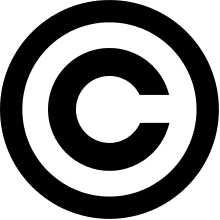The Computer Revolution/Intellectual Properties
Intellectual Property Rights exist to make sure people do not unfairly mistreat, misrepresent, misuse or claim ownership of other people's work. Intellectual property rights include copyrights, trademarks, and the patenting of inventions, products, processes, and procedures.

DRM (Digital Rights Management) and proprietary formats can restricts the ability to study, duplicate, transform and use things such as software, music, photography, or movies. This type of practices also can increase the cost of production and therefore the final product and will endanger historic records and future access to the works as they become public domain. They transform ownership into licensing.
Digital watermarks can be placed on top of digital work to display copyright or ownership while still showcasing the work. Note that recent changes in international copyright law makes it unnecessary to specifically state ownership. Watermarking became useful especially in images with the rise of the Internet.
A trademark or service mark is a word, symbol, phrase, or design (or combination of them) that is specifically assign to a particular product or service, which distinguishes it from other goods or services; also referred to as a brand name.
There are several different symbols that can be used with trademarks (marks on the top, at the end of a logo or a phrase):
TM-for trademarks that are claimed but not registered with U.S. Patent and Trademark Office;
SM-for nonregistered service marks;
R (with a circle around it)-for registered trademarks and service marks.
Trademarks last 10 years, but they can be renewed as many times as anticipated, as long as they are being used in commerce. Although federal registration of a mark is not mandatory, it has several advantages, including notice to the public of the registrant's claim of ownership of the mark, in addition trademark law protects domain names associated with business’s trademark, like Amazon.com for instance.
Source: “Understanding Computers-Today and Tomorrow”-D. Morley, C. Parker (Chapter 16, pg. 635).
Printing Labs Scared of Copyright Infringement
editPrinting Labs worried about copyright infringement are refusing to print digital photos if they look too “professional.” Stores around the country including Wal-Mart and Walgreens are choosing to err on the side of caution. If a photo looks too high quality (and keep in mind this is a very subject decision) then the lab will refuse to print it. This poses a problem when most cameras are now equipped (sometimes even cell phones) to capture extraordinarily high quality photos. It has become harder to distinguish between professional art and a photo that someone took of a flower in their backyard. The current law dates back to the 1970s and is not applicable in today’s society. Many customers will continue to face an uphill battle trying to get their photos printed until something is done to further clarify the law.
Retrieved from http://www.usatoday.com/tech/news/2005-06-16-digital-picture-problems_x.htm on April 25, 2012.